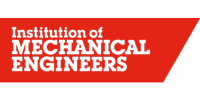
The size of the global lithium-ion battery market will exceed $60 billion by 2024, according to a study by Global Market Insights.
Growing adoption of electric vehicles (EVs) coupled with government initiatives to promote sustainable energy use will drive the lithium-ion battery market size.
In 2015, EV registrations witnessed a 70% increase from the previous year with 550,000 vehicles sold across the globe.
According to EIA, China and the US accounted for 336,000 and 159,000 EV sales respectively in 2016.
The Japanese lithium-ion battery market is set to record above 8% in growth by 2024. Positive outlook towards the automotive sector alongside an increase in adoption of smart devices will stimulate demand in lithium-ion battery market.
In 2016, Japan accounted for over 13 GWh of automotive lithium-ion cell manufacturing capacity representing a 237% increase from the 2014 level. Government focus to limit emissions along with a shifting trend towards renewable energy use will further augment the industry growth.
Industrial lithium-ion battery market is to surpass $9 billion by 2024. These products find wide ranging applications across defense and healthcare sector where capacity, energy density and safety are of paramount importance. Ability to provide higher current makes its adoption preferable across heavy industries including mining, oil & gas and construction.
In 2016, the US accounted for over 80% of North America lithium-ion battery market share. Ongoing digitisation of healthcare industry along with shifting trend toward IoTs has resulted increased demand for smart devices in the country. Government initiatives toward adoption of non-conventional fuel vehicles will further enhance the business outlook.
Ongoing investments toward distributed generation coupled with growing demand for off-grid generation technologies will stimulate the product penetration across the energy storage applications. Rapid expansion of micro-grid networks will further provide impetus to industry growth. Nickel manganese cobalt oxide, lithium iron phosphate, and nickel cobalt aluminum oxide are prominent secondary batteries deployed for these applications.
read more
 Johnson Controls (NYSE:JCI) and Toshiba (OTCPK:TOSBF, OTCPK:TOSYY) are planning to work together in developing and manufacturing lithium ion batteries, Argus reports, amid a growing shift to electric vehicles from vehicles running on fossil fuels.
Johnson Controls (NYSE:JCI) and Toshiba (OTCPK:TOSBF, OTCPK:TOSYY) are planning to work together in developing and manufacturing lithium ion batteries, Argus reports, amid a growing shift to electric vehicles from vehicles running on fossil fuels. The US Department of Energy is launching a major research effort to develop a new generation of lithium-ion batteries largely free of cobalt, a rare and expensive metal delivered through an increasingly troubling supply chain.
The US Department of Energy is launching a major research effort to develop a new generation of lithium-ion batteries largely free of cobalt, a rare and expensive metal delivered through an increasingly troubling supply chain. If you’ve been paying attention to the debate about lithium-ion battery materials, then you will know there is a
If you’ve been paying attention to the debate about lithium-ion battery materials, then you will know there is a  As manufacturers make lithium-ion batteries as cheap as they can, they’re removing valuable elements that make them worthwhile to recycle, according to the Electric Power Research Institute.
As manufacturers make lithium-ion batteries as cheap as they can, they’re removing valuable elements that make them worthwhile to recycle, according to the Electric Power Research Institute. As the demand for smartphones, electric vehicles, and renewable energy continues to rise, scientists are searching for ways to improve lithium-ion batteries–the most common type of battery found in home electronics and a promising solution for grid-scale energy storage. Increasing the energy density of lithium-ion batteries could facilitate the development of advanced technologies with long-lasting batteries, as well as the widespread use of wind and solar energy. Now, researchers have made significant progress toward achieving that goal.
As the demand for smartphones, electric vehicles, and renewable energy continues to rise, scientists are searching for ways to improve lithium-ion batteries–the most common type of battery found in home electronics and a promising solution for grid-scale energy storage. Increasing the energy density of lithium-ion batteries could facilitate the development of advanced technologies with long-lasting batteries, as well as the widespread use of wind and solar energy. Now, researchers have made significant progress toward achieving that goal. New York State has awarded
New York State has awarded  We normally associate Cornwall in England with scones and cream teas … or, if we are really metal nerds, we associate the sometimes-sunny southeast country of the British Isles with mining (particularly with tin mining).
We normally associate Cornwall in England with scones and cream teas … or, if we are really metal nerds, we associate the sometimes-sunny southeast country of the British Isles with mining (particularly with tin mining). Panasonic looks likely to begin producing a lithium-ion battery batteries in China in partnership with Tesla. The announcement came from the company’s CEO Kazuhiro Tsuga on the occasion of the earning conference for its 2018 financials, which was held on Thursday, according to Reuters.
Panasonic looks likely to begin producing a lithium-ion battery batteries in China in partnership with Tesla. The announcement came from the company’s CEO Kazuhiro Tsuga on the occasion of the earning conference for its 2018 financials, which was held on Thursday, according to Reuters. While lightweight lithium-ion batteries are ideal for electric cars, they are also quite expensive – and therefore unsuitable for large-scale, stationary power storage, claimed scientists from ETH Zurich and Empa in Switzerland.
While lightweight lithium-ion batteries are ideal for electric cars, they are also quite expensive – and therefore unsuitable for large-scale, stationary power storage, claimed scientists from ETH Zurich and Empa in Switzerland.
Recent Comments